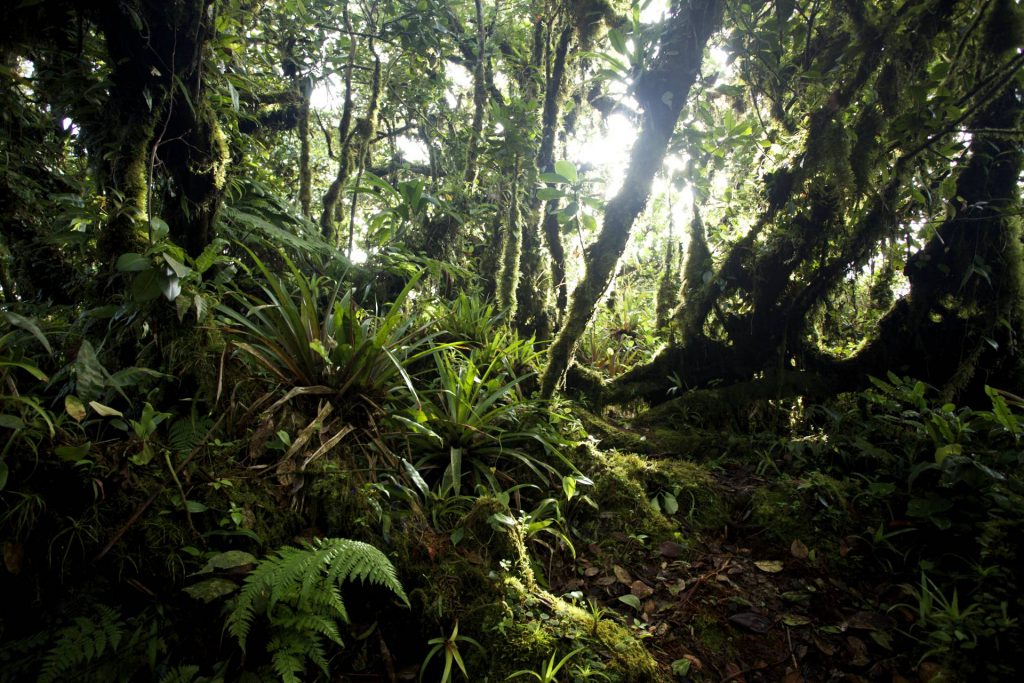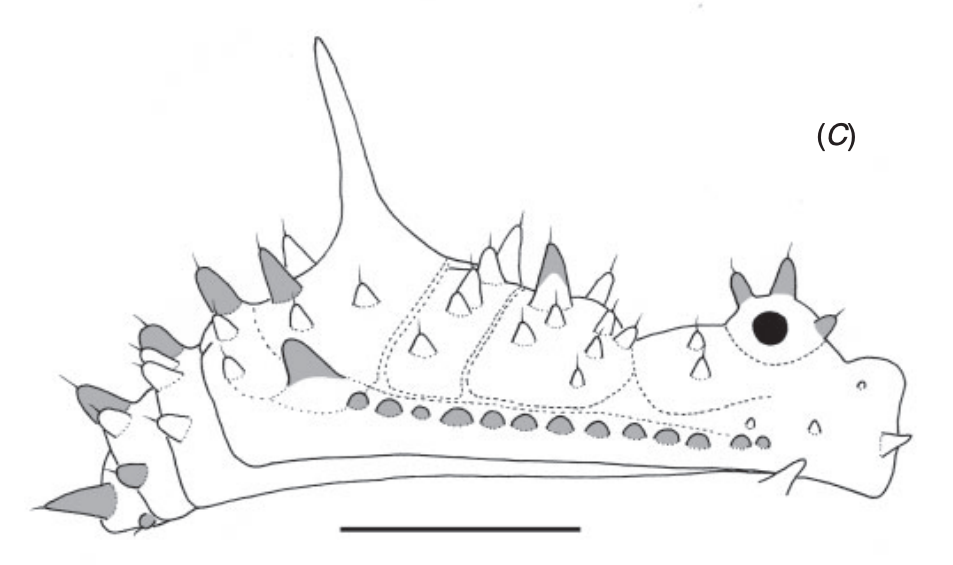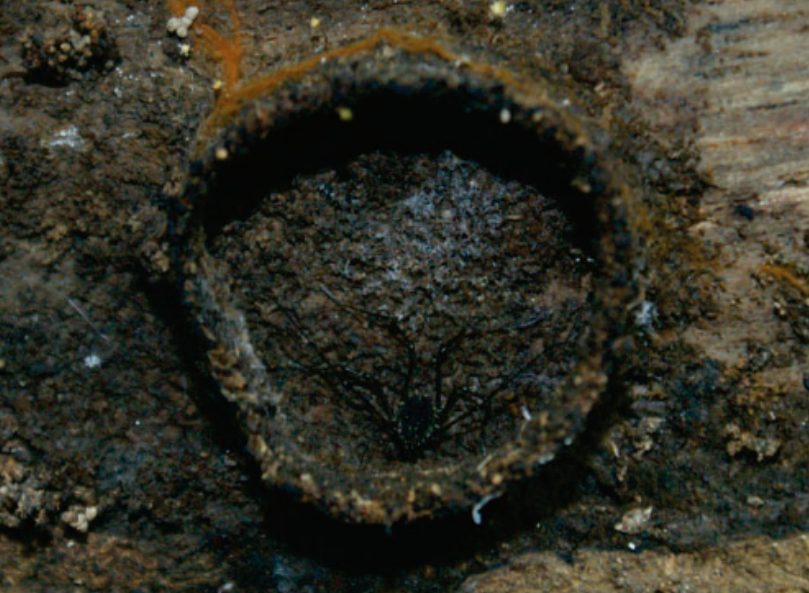Other Species
Bolitoglossa chucantiensis Chucantí Tink Frog
Diasporus majeensis Chucantí Centipede Snake
Tantilla berguidoi Anthurium annularum Anthurium chucantiense Heliconia berguidoi Photinus interdius Quindina kuna Notopleura sallydavidsoniae Diffenbachia mortoniana Neaporia chucanti Syscia austrella Greta Thunberg’s Rainfrog
Pristimantis gretathunbergae Anthurium berguidoi

Quindina kuna

Quindina kuna
Identification
An arachnid with very large legs compared to its small (about 3 mm long) body. Dark brown overall, the top part of its body is covered in small, yellowish-white tubercles (rounded, protruding structures). The location, color, and size of these tubercles aids in identification (see the following section for comparisons with related species).
Biology and Natural History
Nesting behavior: In some ways, the parental role of each sex is reversed in this species: the males construct and protect mud nests underneath fallen logs, which they use to guard their eggs and young. Females generally choose to copulate with males based on the construction of their nest.
Etymology
The species name, "kuna" recognizes the indigenous Kuna people that live in the Darién and San Blás provinces of Panama and adjacent areas of Colombia.
References
- Pinto-da-Rocha, R. & C. Bragagnolo (2017). Cladistic analysis of the family Nomoclastidae with descriptions of a new genus and eight new species (Opiliones, Laniatores). Invertebrate Systematics. 31: 91–123. (Link)





